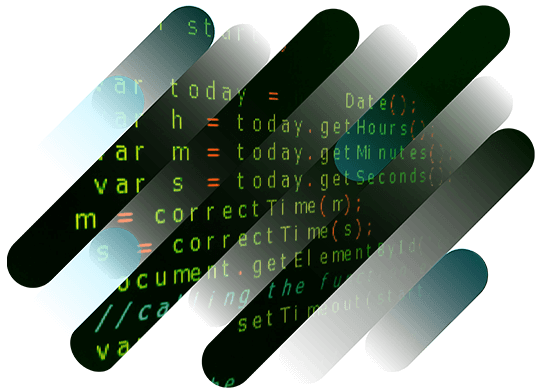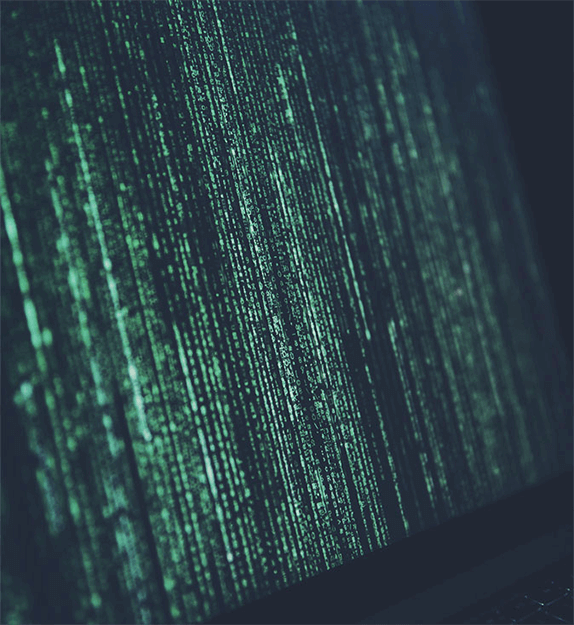Our WAF has a new user interface – for more intuitive and efficient use. Learn more
Home>
IT security
At a Glance
- 01. IT Security: A Definition
- 02. Why Is IT Security so Important?
- 03. Key areas of IT security
- 04. What Attack Methods and Dangers Threaten IT Security?
- 05. What Is the Current IT Security Threat Situation for Companies?
- 06. IT Security Statistics 2024
- 07. How Can Companies Increase Their IT Security?
- 08. IT Security For Different Sectors
- 09. IT Security Incidents and How to Deal with Them
- 10. IT Security: What You Need to Know
01
IT Security: A Definition
IT security is the practice of safeguarding information technologies, including hardware and software, to ensure the secure processing and communication of information. Companies have a legal obligation to develop and implement IT security concepts. Implementing these concepts in the business sector is not optional, but rather a matter of compliance.
In addition to guidelines such as ISO 27001, COBIT or ITIL, specific laws, regulations and guidelines also ensure that companies are aware of their areas of action and responsibility with regard to information security.
Company information must be reliably protected in terms of availability, confidentiality, integrity and authenticity. Compliance with data protection and information security laws is therefore essential in order for a company to be legally compliant.
03
Key areas of IT security
IT security is a complex and multi-layered field that encompasses various aspects of the digital world. Here we take a closer look at five key areas of information security: endpoint security, cloud security, application security, network security and user security.
Endpoint security
Endpoint security involves protecting devices such as computers, smartphones, and tablets from threats. The main problems include malware infections, insecure public Wi-Fi networks and outdated software that facilitates attacks.
Effective solutions include the use of antivirus software that detects and removes malware through regular scans and real-time protection. Firewalls monitor traffic and block unauthorized access, while Endpoint Detection and Response (EDR) technologies continuously monitor endpoints to detect and respond to suspicious activity. In addition, regular updates and patches are crucial to close security gaps and keep devices up to date. These measures ensure the integrity and security of the endpoints.
Cloud security
Cloud security refers to the protection of data, applications, and services in the cloud. The main challenges include data leaks, compliance with legal regulations and access management. To overcome these hurdles, encryption of data at rest and in transit is crucial. Strict identity and access management (IAM) systems ensure that only authorized individuals can access sensitive information.
Regular security checks and continuous monitoring help to identify and rectify vulnerabilities at an early stage. Cloud providers also offer specialized security services to better protect cloud environments. These measures ensure the confidentiality, integrity, and availability of data and applications in the cloud.
Application security
Application security is concerned with protecting applications from threats throughout their lifecycle, from development to deployment and use. One of the greatest challenges is ensuring that the software is free from vulnerabilities and bugs that could be exploited by attackers.
Techniques such as secure coding, regular security audits and penetration testing are essential to identify and fix potential security vulnerabilities at an early stage. Web application firewalls (WAFs) play a crucial role by filtering and blocking malicious traffic. In addition, developers and administrators should make sure to update software regularly and implement patches quickly to close known vulnerabilities and ensure application security.
Network security
Network security includes measures to protect the integrity, confidentiality, and availability of data and resources within a network. The main threats include distributed denial of service (DDoS) attacks, unauthorized access, and man-in-the-middle attacks, where attackers attempt to intercept or manipulate communications.
Firewalls and Intrusion Detection and Prevention Systems (IDPS) are critical to monitor traffic and detect and block suspicious activity. Virtual Private Networks (VPNs) provide secure connections, especially for remote access, while network segmentation helps to limit the spread of attacks. By using these technologies and strategies, networks can be effectively protected from various threats, increasing the security and stability of the entire IT infrastructure.
User security
User security focuses on protecting end users from threats that can arise from unsafe behavior or lack of knowledge. Phishing attacks, where fraudulent emails or websites steal sensitive information, are a common threat. Weak passwords or reusing the same passwords on multiple platforms significantly increase the risk of security breaches. To protect users, training to raise awareness of security risks and secure behaviors is essential.
Multi-factor authentication (MFA) provides an additional layer of security by requiring other verification methods in addition to the password. Corporate security policies that provide clear instructions on the use of IT resources, as well as the use of anti-phishing tools and password managers, help users to behave more securely and avoid potential threats.
04
What Attack Methods and Dangers Threaten IT Security?
Different types of attack methods and vectors test the IT security of systems. According to a recent Gartner analysis, Distributed Denial of Service Attacks (DDoS) are the most widespread. Organizations from all sectors are increasingly exposed to powerful DDoS attacks due to geopolitical factors in recent years.
Aside from DDoS attacks, automated bot attacks on (cloud) applications and underlying databases, malware, and ransomware pose significant IT security risks to companies.
This article will cover the most pressing cyber risks that demand dedicated IT security systems to defend against them.
Botnets
Botnets are one of the most common weapons used by cyber criminals. Botnets are branched networks of compromised end devices such as notebooks, network printers, IP cameras and IoT devices that are controlled remotely by attackers. Cyber criminals use botnets to carry out DDoS attacks, brute force attacks, credential stuffing, credential cracking or click fraud, among other things. To protect against these and many other types of attack, IT security service providers offer various solutions to protect online processes, user accounts and clients.
Malware
The term malware covers all types of computer programs that carry out unwanted or harmful actions in a system. These include computer viruses, worms, trojans, spyware and adware. In most cases, malware reaches target systems via malicious email attachments or manipulated websites. IT security solutions for endpoint protection can prevent such infections.
DDoS attacks
A Distributed Denial of Service (DDoS) attack is a type of cyberattack in which a large number of compromised computers or devices, often referred to as a botnet, are used simultaneously to flood a target resource - such as a website, server or network - with an overwhelming amount of requests or traffic. The goal of a DDoS attack is to significantly impair the availability of the attacked system or to paralyze it completely so that legitimate users can no longer access it. DDoS attacks can lead to significant financial damage, data loss and reputational damage and are one of the most common and effective methods of destabilizing a company's IT infrastructure.
Ransomware
Ransomware is a type of malware that encrypts a system and demands payment in exchange for access to the data. It is also referred to as a blackmail Trojan or encryption Trojan. WannaCry and Petya are among the most well-known types of ransomware. Common distribution channels for ransomware include spam emails, phishing, and drive-by exploits. The latter exploits vulnerabilities in browsers, browser plug-ins, or operating systems.
Spam and Phishing
Spam refers to unsolicited emails and is a common method of spreading malware. Phishing emails, however, are a specific type of spam that attempt to persuade the recipient to take a particular action, such as disclosing login or bank details or installing malware. To effectively combat spam and phishing, IT security solutions that incorporate awareness training and simulation attacks to sensitize employees to these threats are recommended.
Advanced Persistent Threats
Advanced Persistent Threats (APTs) are highly sophisticated, targeted cyberattacks in which attackers infiltrate a network covertly and over the long term in order to steal sensitive data or sabotage operational systems. APTs are characterized by their complex approach, combining various techniques such as spear phishing, zero-day exploits and social engineering to gain access to a target network and keep it undetected. The attackers often remain active over a longer period of time in order to continuously spy out information or manipulate systems. APTs are usually carried out by well-organized groups, often with state support, and are primarily directed against critical infrastructure, financial institutions and other high-value targets with valuable data.
06
IT Security Statistics 2024
IT security plays a crucial role for companies and individuals alike. Cyber threats are constantly evolving and endangering data, systems and business operations worldwide. The following statistics provide an insight into the current threat environment and illustrate the urgent need to protect against cyber attacks and improve security strategies.
„Two thirds of all organizations feel their existence is threatened.” – Bitkom 2024
“7 out of 10 organizations expect serious damage from DDoS attacks.” – Lünendonk 2023
“The number of malicious web requests increased by 53.2 % in the first half of 2024 compared to the same period last year.” – Myra Security Cybersecurity Report H1 2024
“Cyber incidents are the No. 1 business risk.” – Allianz Risk Barometer 2024
“The costs of cybercrime are enormous, with an estimated €148 billion per year for the German economy and €8.6 trillion worldwide in 2024.” – Bitkom 2024
“3 out of 4 cyberattacks target critical infrastructure” – X-Force Threat Intelligence Index 2024
“The number of attacks in Europe increased in 2023 by 32 % compared to the previous year.” – X-Force Threat Intelligence Index 2024
“60% of German companies were attacked more frequently in 2024 than in the previous year. On average, German companies were under attack by cyber criminals 49 times within 12 months – with serious consequences: 46% lost customers, 47% had difficulties acquiring new customers and one quarter incurred costs of over €500,000.” - Hiscox Cyber Readiness Report 2024
“97 % of DACH companies reported at least one cyber incident in the past year.” - Deloitte Global Future of Cyber Survey 2024
07
How Can Companies Increase Their IT Security?
When expanding IT security in companies, it is important to address security-relevant problem areas in digital business processes with equal priority. Regardless of whether these affect software, hardware or the users themselves. Companies that take IT security into account for all active players in the process can keep the virtual attack surface as small as possible. Specifically, seamless programs, tamper-proof hardware, trained users and scalable IT security solutions are required.
Secure Program Code
In software development, security by design refers to the basic concept of incorporating holistic IT security as an integral part of the initial project planning right through to the final product. Programs developed under this premise are less likely to have critical vulnerabilities and are less susceptible to external attacks. In addition, development is more cost-effective, as the subsequent implementation of security-specific changes via updates is usually much more expensive. On the other hand, those who address IT security problems as early as possible in the development process do not have to make extensive adjustments to the code later on.
The Human Firewall
However, IT security does not end with the program code, because even the most capable developers cannot program software that is completely immune to user errors. Rather, the person in front of the screen must also be considered in a holistic IT security strategy. It is not without reason that the BSI specifications for ISO 27001 auf Basis von IT-Grundschutz specify concrete requirements for sensitizing and training staff. The international regulations for payment transactions PCI-DSS also provide for awareness training for all employees.
The most pressing awareness topics include: Password security, advantages of multi-level login procedures such as 2FA/MFA, advantages and use of data encryption, phishing and social engineering as well as identification of attacks and malware infestation.
Hardware Security
IT security also plays a crucial role at the hardware level. This is especially important in the areas of IoT and IIoT & Industry 4.0. When selecting hardware, companies should limit themselves to the previously defined minimum requirements to avoid unnecessarily increasing the network's attack surface. For instance, is a USB port necessary for the device to function, or does the interface provide an unnecessary entry point for attackers?
Protection Against Manipulation
The hardware used must also have a minimum level of tamper protection to make it more difficult for attackers to access the network. This includes permanently installed housing covers and sensors that immediately report physical tampering attempts. Tamper protection is especially important for devices installed in public spaces, where access protection is not guaranteed as it is in offices, production facilities, or factory halls.
Redundancy Protects Against Failures
Hardware problems or defects caused by external factors such as floods or fires cannot be completely prevented. Therefore, it is recommended to run critical applications on redundantly secured hardware. In case of a server failure due to hardware defects, another instance can take over its processes to avoid costly downtime. Companies can also eliminate location-related failures by using geo-redundancy.
Lifecycle Management
Setting up and configuring devices and software is not a one-time task. Companies often need to adapt or expand their networks due to increasing demands on IT security and new business processes. Additionally, individual endpoints require maintenance and replacement. To keep track of your network, detailed lifecycle management for deployment, decommissioning, onboarding to the cloud, and maintenance (software and hardware) is necessary. To prevent uncontrolled data loss, data on retired devices must be irretrievably deleted.
08
IT Security For Different Sectors
The application of IT security practices varies greatly between different industries. Financial service providers rely on a variety of security measures, such as multi-factor authentication, encryption and intrusion detection systems, to ensure the integrity of financial transactions and protection against fraud. Here, it is particularly important to continuously monitor threats and adhere to compliance requirements.
In the healthcare sector, the focus is on protecting sensitive patient data, which is particularly strictly protected by legal regulations such as the GDPR. The implementation of electronic patient records, access restrictions and encryption technologies is essential to ensure the confidentiality and integrity of medical data. Robust measures against ransomware attacks targeting hospitals and healthcare data are also necessary.
Public institutions have the task of protecting sensitive citizen data while ensuring high availability of their services. Security strategies such as network segmentation, strict access controls and regular staff training are used to minimize the risk of cyberattacks and data loss. In addition, security protocols for communication between authorities are particularly important to guarantee information security in the administration.
Insurance companies must protect both the personal and financial data of their customers. They use security measures such as data encryption, secure communication channels and monitoring systems to detect and ward off cyber attacks.
Learn more on our solution pages:
09
IT Security Incidents and How to Deal with Them
Dealing with IT security incidents requires a well-prepared strategy that can be implemented quickly. Companies should have an emergency plan in place that clearly defines how to proceed in the event of a security incident. This includes immediately identifying and containing the incident, notifying all affected parties, and securing and analyzing the affected systems to understand the origin and extent of the incident. An effective communication strategy is also crucial to ensure transparency towards customers, partners, and authorities and to maintain trust. After an incident has been dealt with, comprehensive reports should be created and analyzed to identify vulnerabilities and prevent future incidents. Regular training and simulations of security incidents help to increase employee awareness and responsiveness.
Would you like to find out more about our solutions, application examples and best practices for attack defense? In our download area you will find product sheets, fact sheets, white papers and case studies.
Frequently Asked Questions About IT Security
IT security covers various aspects of protecting computer systems, networks and data from threats. These include network security, system & client security, data security, cloud security & backup, business continuity, threat intelligence and incident response. Overall, IT security aims to ensure the confidentiality, integrity and availability of information and IT systems and to minimize potential risks.
Companies should implement IT security measures based on their individual risks and needs, rather than as an end in itself. To achieve the primary protection goals, suitable IT security systems and measures must be implemented based on the size of the organization and the degree of digitalization and threat.
The market for IT security solutions is large, complex and international - and therefore difficult to keep track of. Nevertheless, various indicators can be used to quickly determine whether an IT security company is reputable: professional IT security service providers have recognized certifications and audit certificates that confirm their expertise. These include, for example, certification in accordance with ISO 27001 auf Basis von IT-Grundschutz (BSI), a certificate for BSI C5 (Cloud Computing Compliance Criteria Catalogue) or certification for PCI-DSS (Payment Card Industry Data Security Standard). Customer references can also be helpful when assessing an IT security company. Large companies, banks, insurance companies and government organizations are careful to only work with established and reputable service providers in order to meet the regulatory requirements for the digital supply chain.
About the author
Björn Greif
Senior Editor
About the author
Björn started his career as an editor at the IT news portal ZDNet in 2006. 10 years and exactly 12,693 articles later, he joined the German start-up Cliqz to campaign for more privacy and data protection on the web. It was then only a small step from data protection to IT security: Björn has been writing about the latest trends and developments in the world of cybersecurity at Myra since 2020.





